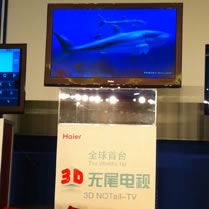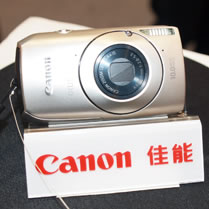HOUR 2:
Tech News & Commentary
Lawrence in Oregon listening on Sirius Ch.108 asked: “Trying to find a software program or a simple Windows trick that will allow me to password protect an external hard drive that does not have that capability already.”
As far as we know, there aren’t any simple Windows tricks that will do this, so you’re going to be looking for a third party solution. Which third party program you select depends on how geeky you feel, compared with how much you are willing to pay.
There is an open source program called TrueCrypt. That is free to use and can create password-protected encrypted volumes on your external hard drive, and then mount those volumes as a drive letter. It will get the job done, but it comes with very little documentation. You’ll have to look online for help, and there is no single entity you can turn to for support if you have a problem. If you feel like you want to get your geek on, TrueCrypt might be the choice for you.
On the other hand, if you’re willing to pay for a program, you could look at something like USB Secure. It will cost you $29.95 after a five-use trial, and by five uses, they mean connecting to your protected drive five times. Don’t think it’s free so long as you want to protect less than five drives. Anyway, USB Secure installs on your computer and gives you a new option when you plug in a flash drive or click the drive icon for an external hard drive for the first time. It’ll pop up with a prompt asking for the access codes to read the drive and if you don’t have them, you can’t see the drive.
For more information, tune in to Hour 2 of our podcast.
“This Week in Tech History” Weekly Feature with Chris Graveline
Dave in Jefferson City, Missouri listening on KLIK 1240 AM asked: “Wondering of you knew anything about the iPhone 4’s faulty proximity sensor and its poor signal.”
The signal issues have been all over the news lately. And we’ve talked about it on recent shows. The phone has a stainless steel band built-in to its side. If you hold the phone a certain way, apparently you can short out the antenna and drop a call. We’re hoping Apple will find a way to fix this, but in the meantime, a low-tech fix is to get what they call a “bumper.” It’s essentially a case that only wraps around the phone, covering that band. That will keep your hands away from it.
The proximity sensor, on the other hand, has not been in the news as much. The proximity sensor is on the inside of the phone and tells the phone when a user holds it up to their ear, shutting off the touchscreen. The problem here is some of these appear to be defective. As a result, the touchscreen doesn’t shut off when you hold the phone to your ear, and it may cause you to accidentally end a call by your ear or cheek touching the screen.
Apple has not yet announced any fixes for these, and it has caused Consumer Reports Magazine to say they can’t recommend the phone to its readers. A lot of people are calling for an iPhone 4 recall and demanding answers from Apple.
For more information, click here, or tune in to Hour 2 of our podcast.
Jim in Ellensburg, Washington listening on XM Ch.139 asked: “I have a trackball mouse and it’s wireless, but the receiver has to plug into a USB port. The show I was listening to tonight says you can use a Bluetooth adapter on a printer. Wondering if they make an adapter I can use to hook up the wire going into my laptop so I can setup my receiver in a different place and I don’t have to have it plugged into my laptop. I travel all the time and my USB ports are getting damaged from having wires plugged into them. I also use a GPS that I’d like to have converted over to Bluetooth also.”
No, but you really can’t do what you are asking to do. You want to take a device designed to plug in to a computer on a USB port and convert it’s connection to Bluetooth.
You can get a Bluetooth adapter that plugs in to a USB port, so you could then switch to a Bluetooth mouse/trackball and a GPS that uses Bluetooth.
Then you could leave that adapter plugged in and connect all your devices wirelessly to your computer. But the devices themselves must be using Bluetooth to communicate. You’ll need different devices if you want to shed your USB connections.
| HOUR 2 | ||
 |
 |
 |
| Haier unveiled a Wireless 3D LED TV | Susan Schwab, Professor of Public Policy at University of Maryland & former Ambassador of International Trade under the George W. Bush Administration | Canon PowerShot SD4000IS (As reported by Rob Almanza) |
 |
 |
 |
| Rob, Jason & Dave at SINOCES | “May Wind” Sculpture at May 4th Square in Qingdao, China | Canon XF305 Professional HD Camcorder (As reported by Rob) |
 |
 |
 |
| SINOCES Show floor | Dave & Jason at May 4th Square in Qingdao in front of mobile police unit | Chicken Dinner Chinese-style |
John in Pocatello, Idaho listening on Sirius Ch.108 asked: “What I’m looking for is a mobile TV device and phone all wrapped up together. I’d like excellence service for that product.”
The BlackBerry, iPhone, or almost any Android phone can do what you’re asking. The only question is what you’re willing to pay for the service. There is a new app out for the BlackBerry called BitBop that offers a wide variety of channels and pretty decent streaming picture quality, but a subscription to the service to the service costs $9.99 per month. The multi platform FLO TV service, which works on many different phones and some other portable devices, is $14.99 a month, or $149 a year.
 Something like Slingbox will let you watch TV on your mobile phone, but it’s tied to programming that you’ve recorded using a DVR back at your house. It’s not so much picking a show from the program guide and watching it on your phone as it is having access to what you’ve already recorded, from wherever you happen to be.
Something like Slingbox will let you watch TV on your mobile phone, but it’s tied to programming that you’ve recorded using a DVR back at your house. It’s not so much picking a show from the program guide and watching it on your phone as it is having access to what you’ve already recorded, from wherever you happen to be.
The question of what kind of TV is important? Archived shows? Or live broadcasts as they are happening right now? For archived stuff, you can get TV shows for your iPhone or iPad through iTunes. If you have an iPad, you can use Netflix for TV shows and movies alike.
For more information, tune in to Hour 2 of our podcast.
Jack in Los Alamos, New Mexico listening on XM Ch.139 or via the Internet asked: “I have two very old laptops running XP. They are really slow. I’m wondering if converting them to Linux would help this out. Wondering where I can get a “cookbook” that will explain how to install Linux on these computers. Both are limited to about 1GB in memory.”
Of course you can install Linux on your laptops. You can either replace Windows XP with a Linux distro (distribution, or packaged, pre-compiled version of Linux), or you can install Linux in a dual boot environment along with Windows XP, splitting the hard drive space.
The advantage of Linux is its speed and security. It’s a faster OS than Windows XP, and it runs on more modest hardware. Your laptops, with their 1GB of RAM, would certainly feel much faster running Linux. But that is only part of the equation.
As for information on installing Linux, we recommend the following websites: The Linux HQ, the main Linux.org site and a site called Linux Tutorial.
This Week’s Prizes for Our Listeners
Honestech: Fotobox – Easy to use photo slideshow software
OrigAudio: “Rock-It” Portable Vibration Speakers
RadioShack: Weather Clock Radios – with SkyWarn
SmartSwipe: Secure personal credit card readers for shopping online
YoGen: The Universal mobile-device charger

